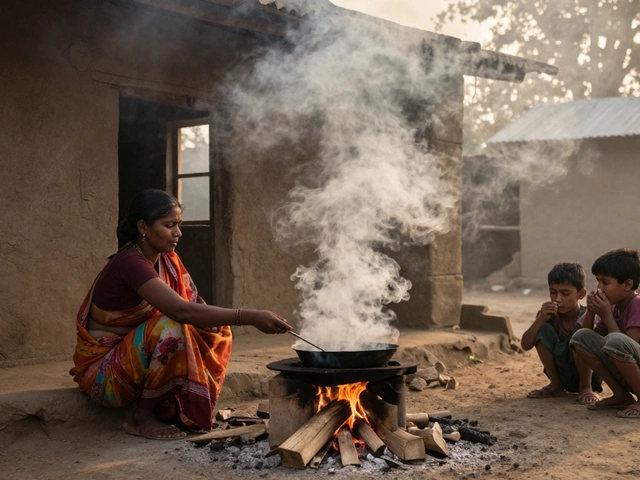Public Health Approaches Explorer
Select an approach below to learn more about its goals, tools, and examples.
Health Promotion
Enable people to make healthier choices
Disease Prevention
Stop disease before it starts or catch it early
Health Protection
Shield populations from environmental hazards
Health Surveillance
Detect and respond to health threats quickly
Approach Details
Select an approach above to view detailed information.
- Public health approaches are organized strategies that aim to improve health at the community level.
- The four main approaches are health promotion, disease prevention, health protection, and health surveillance.
- Each approach works at a different point in the health‑care continuum and targets distinct audiences.
- Combining the approaches creates a robust system that can handle everything from lifestyle‑related risks to emerging infectious threats.
- Practical examples include school‑based nutrition programs, vaccination campaigns, water‑quality regulations, and real‑time outbreak monitoring.
When we talk about keeping communities safe, public health approaches are organized strategies that governments, NGOs, and health agencies use to improve population health, prevent disease, and respond to health threats guide every action from school vaccine drives to clean‑water policies.
Why a Structured Set of Approaches Matters
Imagine trying to treat a fire with only a water hose. You might douse the flames, but you would miss the chance to stop the fire from starting in the first place. Health promotion focuses on enabling people to increase control over their health through education, environment changes, and policy support is the preventive water‑hose; disease prevention targets specific risk factors with interventions such as immunizations, screenings, and lifestyle advice adds a targeted spray; health protection uses legal and regulatory tools to shield populations from hazardous exposures builds a fire‑proof barrier; and health surveillance provides real‑time data to detect, monitor, and respond to emerging threats acts as the alarm system. Together they form a resilient public‑health architecture.
1. Health Promotion
Health promotion aims to enable individuals and communities to increase control over the determinants of health through education, community engagement, and supportive policies is the broadest of the four approaches. It operates on three pillars: education, environment, and policy.
- Education: school curricula that teach nutrition basics, workplace workshops on stress management, mass media campaigns encouraging physical activity.
- Environment: creating walkable cities, ensuring access to affordable fresh produce, designing smoke‑free public spaces.
- Policy: taxation on sugary drinks, mandatory labeling of allergens, legislation that requires schools to serve balanced meals.
Key players include the World Health Organization (WHO) the United Nations agency leading global health promotion initiatives and national ministries of health. Success stories range from Finland’s reduction of cardiovascular deaths through community‑wide diet changes to Brazil’s “Food and Nutrition Security” program that cut childhood stunting by 30% in a decade.
2. Disease Prevention
Disease prevention focuses on specific interventions that stop illnesses before they start or catch them early enough to reduce severity is often broken into three levels: primary, secondary, and tertiary.
- Primary prevention: immunizations (e.g., measles, COVID‑19), anti‑smoking laws, safe‑sex education.
- Secondary prevention: screening programs such as mammography, blood pressure checks, and hepatitis‑C testing.
- Tertiary prevention: rehabilitation services, chronic disease management plans, and post‑stroke therapy.
The Centers for Disease Control and Prevention (CDC) U.S. agency that designs and evaluates disease‑prevention programs worldwide provides evidence‑based guidelines that many countries adapt. One tangible metric: the introduction of the HPV vaccine in over 100 nations has slashed cervical‑cancer incidence by an estimated 70%.
3. Health Protection
Health protection relies on legal, regulatory, and engineering measures to shield populations from environmental, occupational, and chemical hazards is the enforcement arm of public health.
- Environmental regulations: limits on air‑pollutant emissions, standards for safe drinking water, bans on leaded gasoline.
- Occupational safety: mandatory use of personal protective equipment in factories, ventilation standards in mines.
- Food safety: Hazard Analysis and Critical Control Points (HACCP) systems, strict inspection of meat processing plants.
Effective health protection depends on epidemiology the scientific study of disease patterns, causes, and effects in populations to identify risk hotspots. For instance, after the 2014-2016 Flint water crisis, epidemiological data guided a massive overhaul of U.S. water‑quality standards, preventing similar lead exposure events.
4. Health Surveillance
Health surveillance collects, analyses, and interprets health‑related data continuously to detect outbreaks, monitor trends, and evaluate interventions is the eyes‑and‑ears of the system.
- Passive surveillance: routine reporting of notifiable diseases by clinicians.
- Active surveillance: field teams that test samples during a suspected outbreak.
- Syndromic surveillance: real‑time analysis of emergency‑room chief complaints, social‑media trends, and pharmacy sales to spot early signals.
Modern surveillance leverages behaviour change strategies that influence individual actions through cues, incentives, and social norms insights to improve reporting compliance. The COVID‑19 pandemic showed the power of digital dashboards; nations using near‑real‑time dashboards reduced case‑fatality rates by an average of 25% compared with those relying on monthly reports.

Comparing the Four Approaches
| Approach | Main Goal | Typical Tools | Primary Audience | Example |
|---|---|---|---|---|
| Health Promotion | Empower people to make healthier choices | Education campaigns, policy incentives, built‑environment changes | General public, schools, workplaces | Tax on sugary drinks reducing consumption by 15% |
| Disease Prevention | Stop disease before it starts or catch it early | Vaccines, screenings, lifestyle counselling | At‑risk groups, children, elderly | HPV vaccine lowering cervical cancer rates |
| Health Protection | Safeguard populations from environmental hazards | Regulations, inspections, engineering controls | Industries, municipalities, consumers | Air‑quality standards reducing asthma attacks |
| Health Surveillance | Detect and respond to health threats quickly | Reporting systems, data dashboards, lab networks | Health officials, clinicians, policy makers | Real‑time COVID‑19 dashboard informing lockdowns |
How to Apply These Approaches in Your Community
Start with a quick assessment: what health issues are most pressing locally? Use social determinants of health conditions like income, education, housing, and environment that shape health outcomes as a lens. If low‑income neighborhoods lack safe parks, health promotion and health protection overlap-build a park (environmental change) and enact zoning laws that prevent industrial pollutants nearby.
Next, pick a measurable target. For example, aim to increase flu‑vaccination rates among seniors from 45% to 70% within two years. Combine disease‑prevention tactics (free vaccination clinics), health‑promotion messages (radio spots), and health‑protection policies (mandatory vaccination for long‑term care staff). Track progress with health surveillance dashboards, adjusting tactics as data arrive.
Common Pitfalls and How to Avoid Them
- Over‑reliance on a single approach: Focusing only on education ignores structural barriers. Blend approaches for maximum impact.
- Ignoring data quality: Inadequate surveillance leads to delayed responses. Invest in reliable reporting tools and train staff.
- Policy fatigue: Too many regulations can provoke public resistance. Pair policy with clear communication and community involvement.
- Equity blind spots: Programs that don’t consider vulnerable groups widen health gaps. Use health‑equity impact assessments early.
Future Trends Shaping the Four Approaches
Digital health tools-mobile apps, wearable sensors, and AI‑driven analytics-are blurring the lines between surveillance and promotion. Real‑time data from wearables can trigger personalized health‑promotion nudges, while AI models predict outbreak hotspots before they appear. Meanwhile, climate‑change‑driven events (heatwaves, vector‑borne diseases) demand stronger health‑protection regulations and faster surveillance pipelines.
Next Steps for Practitioners
- Conduct a local health‑needs assessment using existing surveillance data.
- Identify which of the four approaches address each priority gap.
- Develop a mixed‑strategy plan that includes measurable targets, responsible stakeholders, and a timeline.
- Secure funding or policy support-highlight cost‑benefit data from similar projects.
- Launch pilot activities, monitor indicators weekly, and iterate based on findings.
Frequently Asked Questions
What is the difference between health promotion and disease prevention?
Health promotion is a broad, upstream effort that creates environments and policies encouraging healthier choices for everyone. Disease prevention is more targeted, focusing on specific actions-like vaccines or screenings-to stop particular illnesses before they develop or catch them early.
How does health surveillance help in outbreak control?
Surveillance collects real‑time data on disease incidence, identifies unusual spikes, and alerts health officials. Quick detection lets authorities isolate cases, distribute resources, and communicate risks before the outbreak spreads widely.
Can health protection measures affect personal freedoms?
Yes, regulations like smoking bans or mandatory vaccinations can be perceived as limiting freedom. Balancing public safety with individual rights requires transparent decision‑making, clear communication of benefits, and, where possible, offering alternatives or exemptions.
What role do social determinants of health play in these approaches?
Social determinants shape the context in which all four approaches operate. For example, without affordable housing (a social determinant), health‑promotion messages about nutrition may fall flat. Integrating equity analyses ensures interventions reach those who need them most.
How can small communities start a health surveillance system with limited resources?
Start with simple, paper‑based reporting for key notifiable diseases, then transition to low‑cost digital tools like mobile apps that send SMS alerts. Partner with regional labs for confirmatory testing and use open‑source dashboards to visualise trends.



